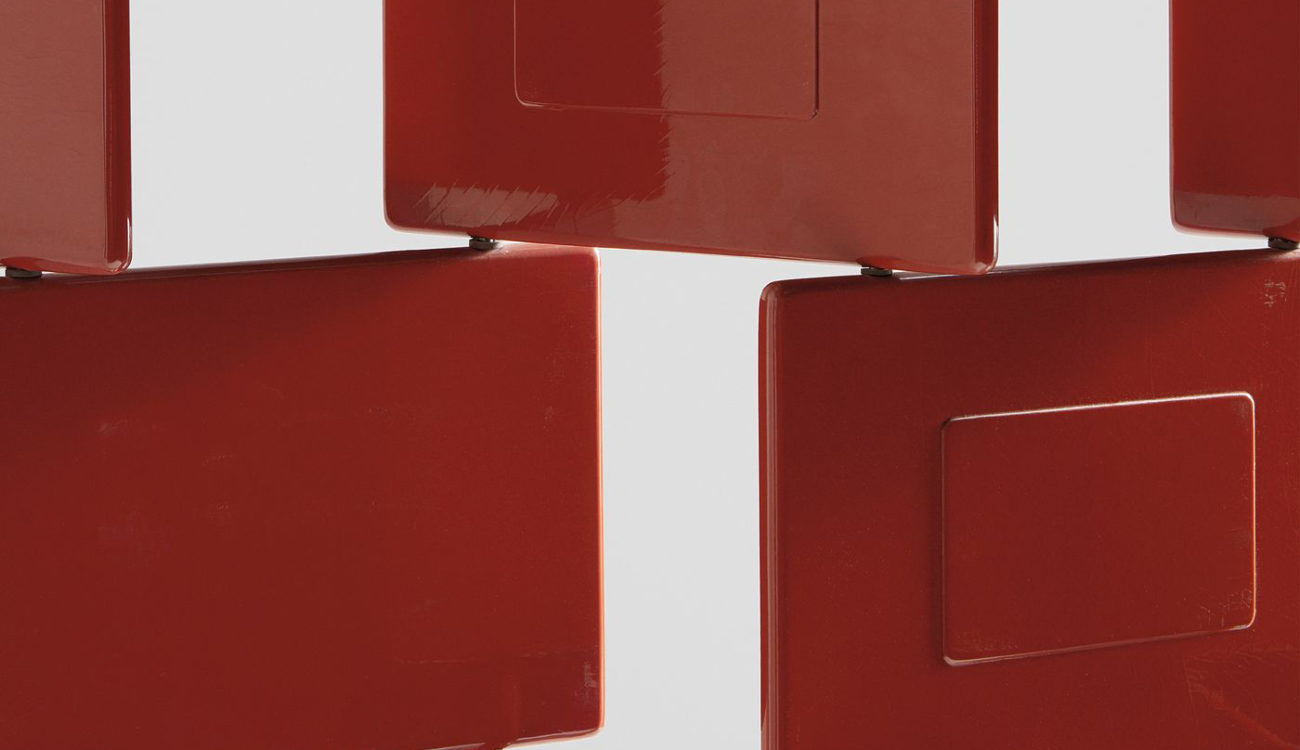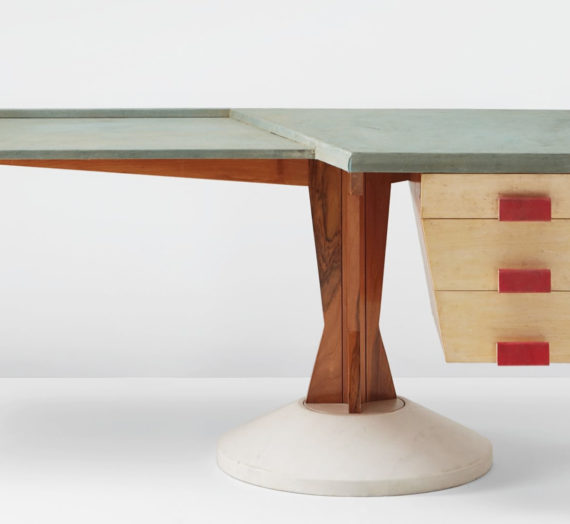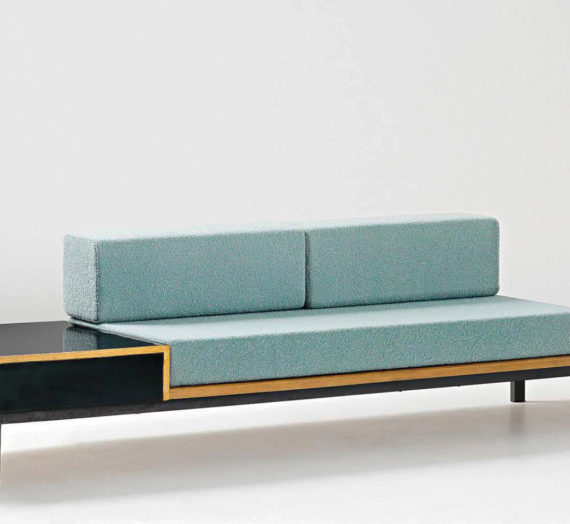Unique in its configuration and color, this piece — the only red “Brick” screen — was acquired directly from Eileen Gray circa 1973 by French interior designer Andrée Putman, heir to Gray’s concise arrangements and considered eye. In fact, it was the legendary Putman’s devotion to Gray’s seminal works of the 1920s that drove a resurgent interest in the elder designer’s triumphs of that earlier period.
Pioneering New York collector Steven Greenberg, who, together with Putman, Andy Warhol and Robert Walker, championed a 1970s reappraisal of Art Deco, later acquired the screen for his New York apartment, where it kept company with masterworks by the great lacquer artist Jean Dunand. Despite the fact Gray had eschewed Art Deco’s burly ornamentation and volumetric curves, Greenberg’s devotion to that style, and specifically to Dunand, would have inclined him to Gray — a master of true lacquer who had introduced Dunand to their shared teacher, Seizo Sugawara, in 1912.
In an undated letter to her niece Prunella Clough, Gray claimed to have produced only ten “Brick” screens, as noted by Dr. Jennifer Goff, Curator of the Eileen Gray collection at the National Museum of Ireland. This small group comprised an early black painted example, another pale wood example and two white painted examples, after which she produced her various lacquered “Brick” screens, the majority of them black. Four of Gray’s small series of “Brick” screens are in the permanent collections of the National Museum of Ireland, Dublin; The Museum of Modern Art, New York; the Virginia Museum of Fine Arts, Richmond; and the Victoria and Albert Museum, London. This special red screen from our Evening Sale dates to Gray’s final burst of creativity in the early 1970s.








Leave a Reply